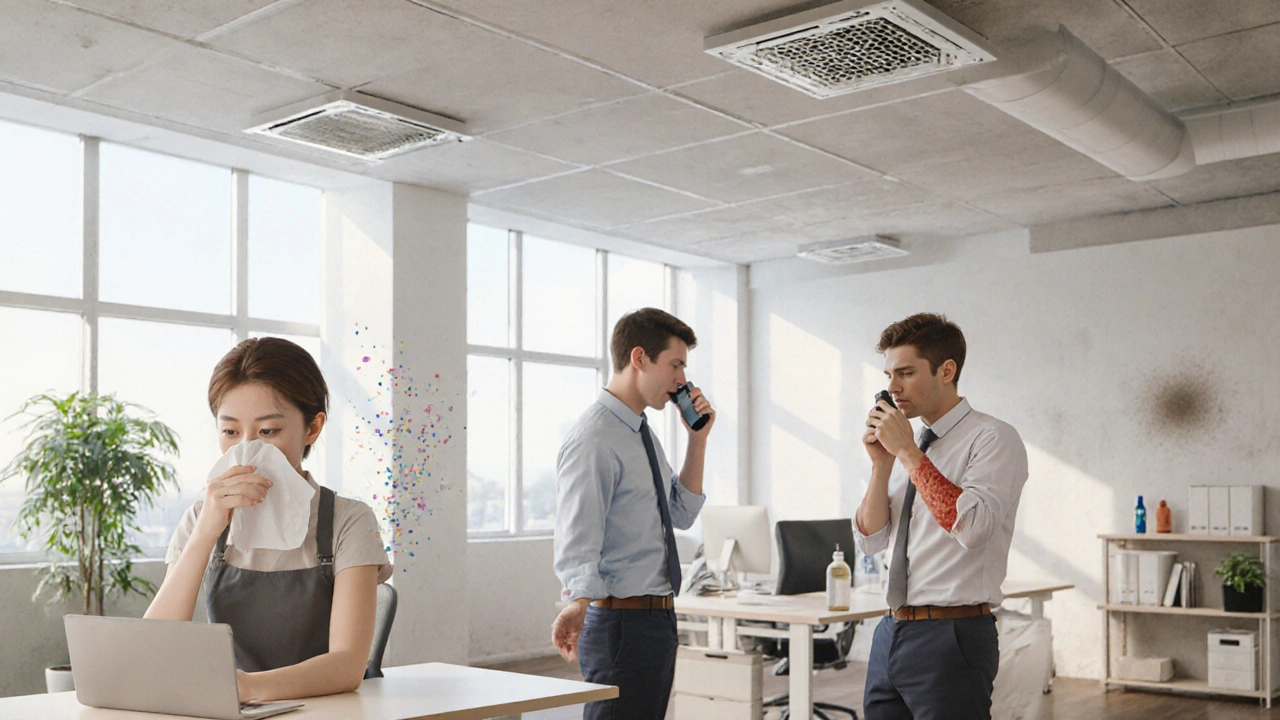Prevent Workplace Allergies: Practical Guidance for Every Employee
When talking about Prevent Workplace Allergies, the effort to identify and lower exposure to allergens that cause reactions at work. Also known as occupational allergy prevention, it helps keep staff productive and reduces sick days.
First, you need to know what you’re up against. Allergy Triggers, substances like dust, pollen, mold, chemicals, or animal dander that provoke allergic responses are everywhere—from office carpets to manufacturing plants. Mapping these triggers is the first step in any prevention plan. Once you’ve listed them, you can match each trigger to a control method, whether that means swapping materials, adjusting schedules, or adding barriers.
Key Strategies to Keep Allergens at Bay
One of the most effective tools is Personal Protective Equipment, gear such as masks, gloves, or eye protection designed to block exposure to airborne or contact allergens. When workers wear the right PPE, they create a physical shield that cuts down on inhalation and skin contact. But PPE works best when paired with good hygiene—regular hand washing, changing clothes after high‑exposure tasks, and cleaning shared equipment.
Air quality is another big piece of the puzzle. Installing high‑efficiency filters and maintaining proper ventilation prevent workplace allergies by capturing dust, spores, and chemical fumes before they circulate. Simple steps like keeping windows open when weather permits, using portable air purifiers in hot‑spot areas, and scheduling routine filter changes can dramatically lower airborne allergen levels.
Beyond hardware, a strong occupational health program ties everything together. Regular health screenings catch early symptoms, and education sessions teach staff how to recognize signs of an allergic reaction. Policies that encourage prompt reporting of symptoms and provide access to medical consultation create a culture where allergies are managed proactively, not reactively.
Finally, consider environmental adjustments. Replacing carpet with low‑pile flooring, using hypoallergenic cleaning products, and controlling humidity to discourage mold growth all contribute to a safer workspace. When you combine these measures—trigger identification, PPE, air filtration, health programs, and environmental tweaks—you build a layered defense that addresses allergens from every angle.
Below you’ll find a curated set of articles that dive deeper into each of these topics, from choosing the right mask to setting up an effective occupational health policy. Browse the list to get detailed how‑tos, product comparisons, and expert tips that will help you put these strategies into action right away.
Managing Workplace Allergies: Prevention and Treatment Guide
Learn how to spot, manage and prevent workplace allergies with practical steps, legal guidance and a clear action plan for employers and employees.
Read





